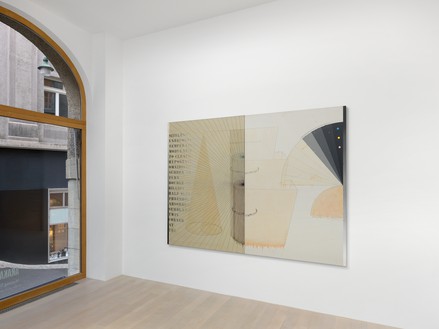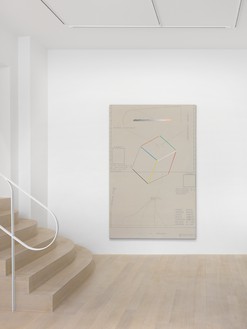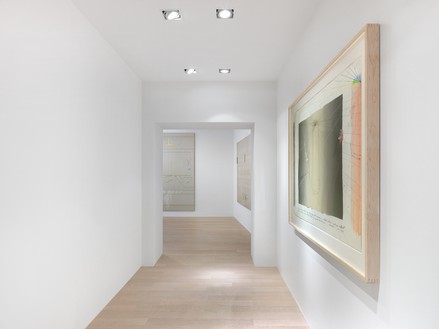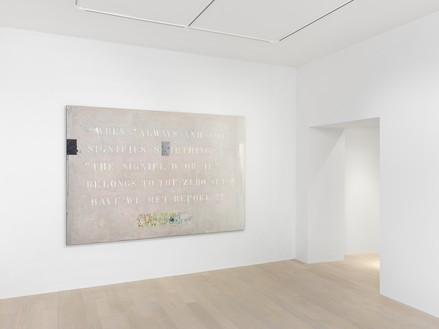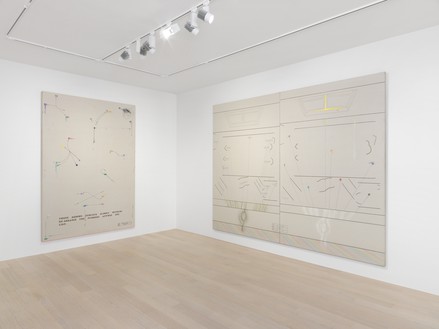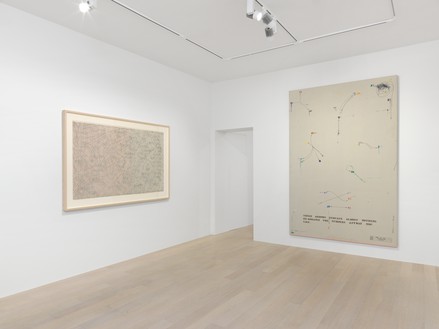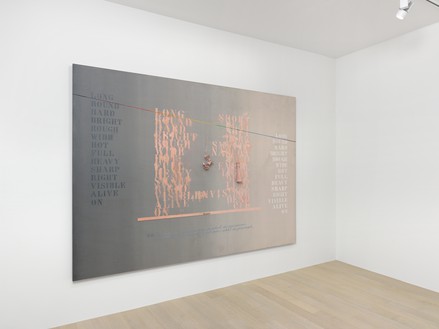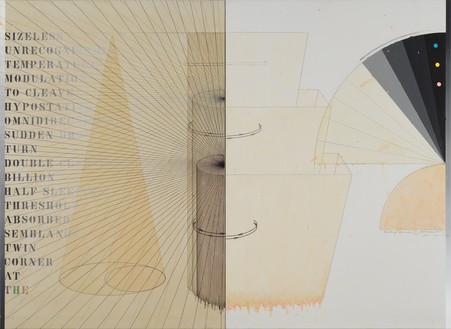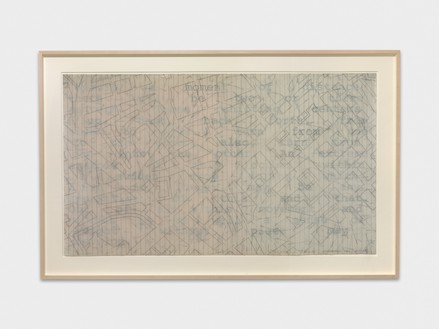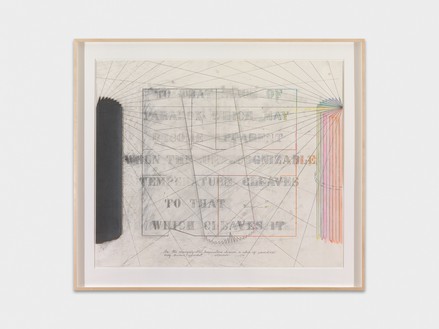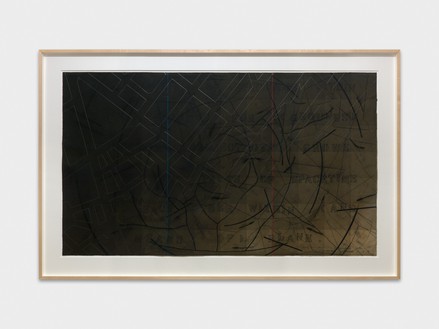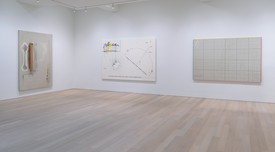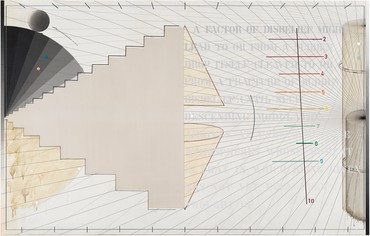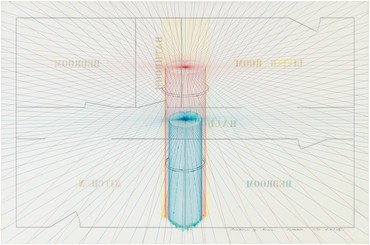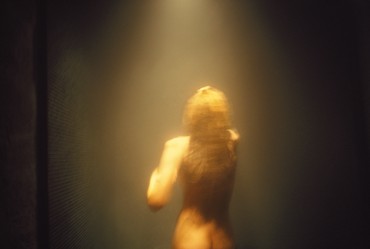About
I wanted to change art, to change life—I became a radical.
—Arakawa
Gagosian is pleased to present Waiting Voices, an exhibition of works on canvas and paper by Arakawa produced between 1964 and 1984. This is the artist’s first exhibition with the gallery in Basel.
Arakawa (1936–2010) was one of the earliest international pioneers of Conceptual art, and a founding member of the Japanese avant-garde collective Neo Dada. Working in painting, drawing, printmaking, and architecture, he described himself as an “eternal outsider” and an “abstractionist of the distant future.” After relocating from Tokyo to New York in 1961, where he encountered Marcel Duchamp and many of the French artist’s contemporaries, he began producing “diagram paintings,” combining schematic images with text in a study of epistemology and perception. In 1962, Arakawa met his future wife and collaborator, the poet, writer, and philosopher Madeline Gins. From 1963 to 1973, the couple collaborated on an eighty-painting suite, The Mechanism of Meaning, and in the 1990s they worked on a theory of “procedural architecture” through which they aimed to extend the lives of a building’s occupants.
Waiting Voices features paintings and drawings produced by Arakawa over a twenty-year span. A Diagram of Imagination (1965), Separated Continuums (1966), and A Couple (1966–67) are among several paintings from the mid-1960s that represent architectural space. The earliest of the three shows part of a simple town plan layered over a grid; the others focus on interior space. In Separated Continuums, coordinates on a grid—featureless apart from two colored lines—are labeled with the names of household objects and fixtures. A Couple is, for the most part, similarly schematic, but Arakawa has added renderings of windows to the graphic marks as well as stenciled words and numbers that denote the contents of the room. The painting’s diptych format also hints at a narrative progression and allows viewers to imagine the unseen titular duo.
Ich wollte die Kunst verändern, das Leben verändern – ich wurde zu einem Radikalen.
—Arakawa
BASEL, 15. November 2021—Gagosian präsentiert Waiting Voices, eine Ausstellung mit Arbeiten von Arakawa auf Leinwand und Papier, die von 1964 bis 1984 entstanden sind. Es ist die erste Ausstellung dieses Künstlers in der Basler Galerie.
Arakawa (1936–2010) war einer der frühsten internationalen Pioniere der Konzeptkunst und Gründungmitglied des japanischen Avantgarde-Kollektivs Neo Dada. Sein Werk umfasst Malerei, Zeichnung, Grafik und Architektur. Er bezeichnete sich als «ewigen Aussenseiter» und «Abstraktionskünstler der fernen Zukunft». Nach seiner Übersiedlung von Tokio nach New York im Jahr 1961, wo er Marcel Duchamp und viele Zeitgenossen des französischen Künstlers kennenlernte, begann er, so genannte Diagramme zu schaffen, bei denen er zur Erkundung der Epistemologie und Wahrnehmung schematische Bilder mit Text kombinierte. 1962 lernte Arakawa die Dichterin, Schriftstellerin und Philosophin Madeline Gins kennen, seine spätere Frau und Mitarbeiterin. Von 1963 bis 1973 arbeitete das Paar gemeinsam an einer 80 Bilder umfassenden Werkreihe unter dem Titel The Mechanism of Meaning und in den 1990er-Jahren entwarf es eine Theorie der «prozeduralen Architektur», die die Lebenszeit der Bewohnerinnen und Bewohner verlängern sollte.
Die Ausstellung Waiting Voices umfasst Gemälde und Zeichnungen, die Arakawa über einen Zeitraum von zwanzig Jahren geschaffen hat. Von Mitte der 1960er-Jahre stammen die Bilder A Diagram of Imagination (1965), Separated Continuums (1966) und A Couple (1966–67). Wie andere Werke aus jener Zeit stellen sie den Architekturraum dar. Im frühesten dieser drei Werke ist ein Ausschnitt eines einfachen Stadtplans zu sehen, der über einen Raster zu liegen kommt. Bei den anderen steht der Innenraum im Mittelpunkt. In Separated Continuums sind die Koordinaten eines Rasters, der abgesehen von zwei farbigen Linien keine weiteren Gestaltungselemente aufweist, mit den Bezeichnungen von Alltagsgegenständen und Armaturen markiert. A Couple ist fast ebenso schematisch gehalten, doch ergänzte Arakawa die grafischen Elemente durch Fenster und Wörter- und Zahlenschablonen, die Elemente im Raum bezeichnen. Das zweiteilige Format lässt auf eine fortschreitende Erzählung schliessen, so dass sich die Betrachterinnen und Betrachter das nicht dargestellte, im Bildtitel genannte Duo vorstellen können.
In Untitled (Voice Inoculations) (1964–65) ist ein diagrammatischer Kubus mit Wörtern versehen –wobei einige davon rückwärts buchstabiert sind, was Rätsel der Orientierung, des Massstabs und sonstiger Eigenschaften von Gegenständen aufgibt. Hard or Soft No. 3 (1969) enthält ebenfalls Text. Hier informiert er mit dem Arakawas ganz eigenen trockenen Humor, dass die sich über das Bild hinziehenden Pfeile «auf fast nichts hinweisen» und die abgebildeten Zahlen beliebig umgeordnet werden können. Im zweiteiligen Bild Waiting Voices (1976–77) werden Gefüge von geometrischen Formen zusammengebracht – was an die «Verehrer» in Duchamps La mariée mise à nu par ses célibataires, même (Le Grand Verre) (1915–23) erinnert – und mit abstrusen Randnotizen versehen.
Ausgestellt werden zudem mehrere Bilder auf Papier, einschliesslich Study for “Blank” No. 2 (1981) und Study for the “Sharing of Nameless” No. 3 (1983–84), auf denen sich Geflechte, die wie Pläne aussehen, über Wörter, Pfeile und im zweiten Beispiel einen in bunten Tönen gehaltenen Raster spannen. Durch das Zusammentreffen von codierter Bedeutung und den Untiefen der Vieldeutigkeit schlagen sie Brücken zu Arakawas Vorstellungswelt und schaffen Kunst, die sich erst im Geist und Körper der Betrachtenden voll entfaltet.
#ShusakuArakawa
Artist
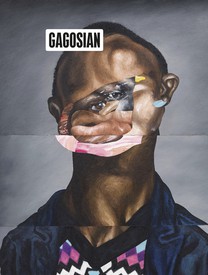
Now available
Gagosian Quarterly Fall 2019
The Fall 2019 issue of Gagosian Quarterly is now available, featuring a detail from Sinking (2019) by Nathaniel Mary Quinn on its cover.
Arakawa: Diagrams for the Imagination
The exhibition Arakawa: Diagrams for the Imagination receives a closer look by Gagosian director Ealan Wingate. In this video, he discusses the artist’s arrival in New York and examines the importance of maps and language in Arakawa’s work.

Losing Nothing: Arakawa and Madeline Gins
Mary Ann Caws reflects on the centrality of perception and imagination in Arakawa’s art, from his early diagrammatic paintings to his later architectural investigations with Madeline Gins.
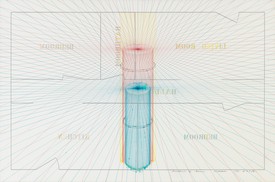
Rediscovering Arakawa
The influential work of the Japanese-born artist Arakawa—who forged prescient and crucial links between Dadaism, abstract art, Minimalism, conceptual art, Pop art, and more—explored by David Colman.
News
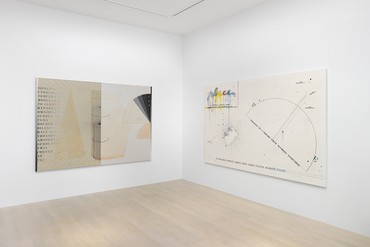
Lecture
Arakawa and Arakawa + Gins
Art and Architecture
Wednesday, January 12, 2022, 12pm est
Tiffany Lambert, curator at the Japan Society in New York, will discuss the relationship between Arakawa’s art and his collaborative architecture practice with Madeline Gins. Taking Arakawa’s conceptual works from the 1960s and the 1980s—including paintings and drawings on view in the exhibition Arakawa: Waiting Voices at Gagosian, Basel, through January 22—as a starting point, this online talk examines the compelling connections between these works and the pair’s idea of using the built form as a way to investigate and transform the relationship between body and environment. To join the online event, register at zoom.us.
Installation view, Arakawa: Waiting Voices, Gagosian, Basel, November 25, 2021–January 22, 2022. Artwork © 2021 Estate of Madeline Gins. Reproduced with permission of the Estate of Madeline Gins. Photo: Annik Wetter
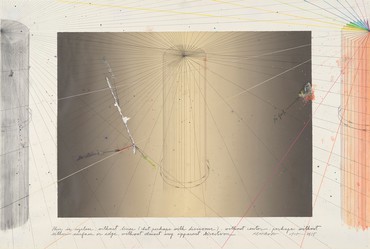
Tour
Arakawa
Waiting Voices
Thursday, December 9, 2021, 11am EST (5pm CET)
Join the Reversible Destiny Foundation for a virtual tour of the exhibition Arakawa: Waiting Voices with Ignacio Adriasola, assistant professor in the Department of Art History, Visual Art, and Theory at the University of British Columbia. On view at Gagosian, Basel, through January 22, the exhibition features works on canvas and paper made by Arakawa between 1964 and 1984. The artist was one of the earliest international pioneers of Conceptual art, and a founding member of the Japanese avant-garde collective Neo Dada. To join the online event, register at us02web.zoom.us.
Arakawa, Sketches for “An Anatomy of the Signified or If . . .” (Part 1 and 2) No. 5, 1974–75 © 2021 Estate of Madeline Gins. Reproduced with permission of the Estate of Madeline Gins. Photo: Rob McKeever
